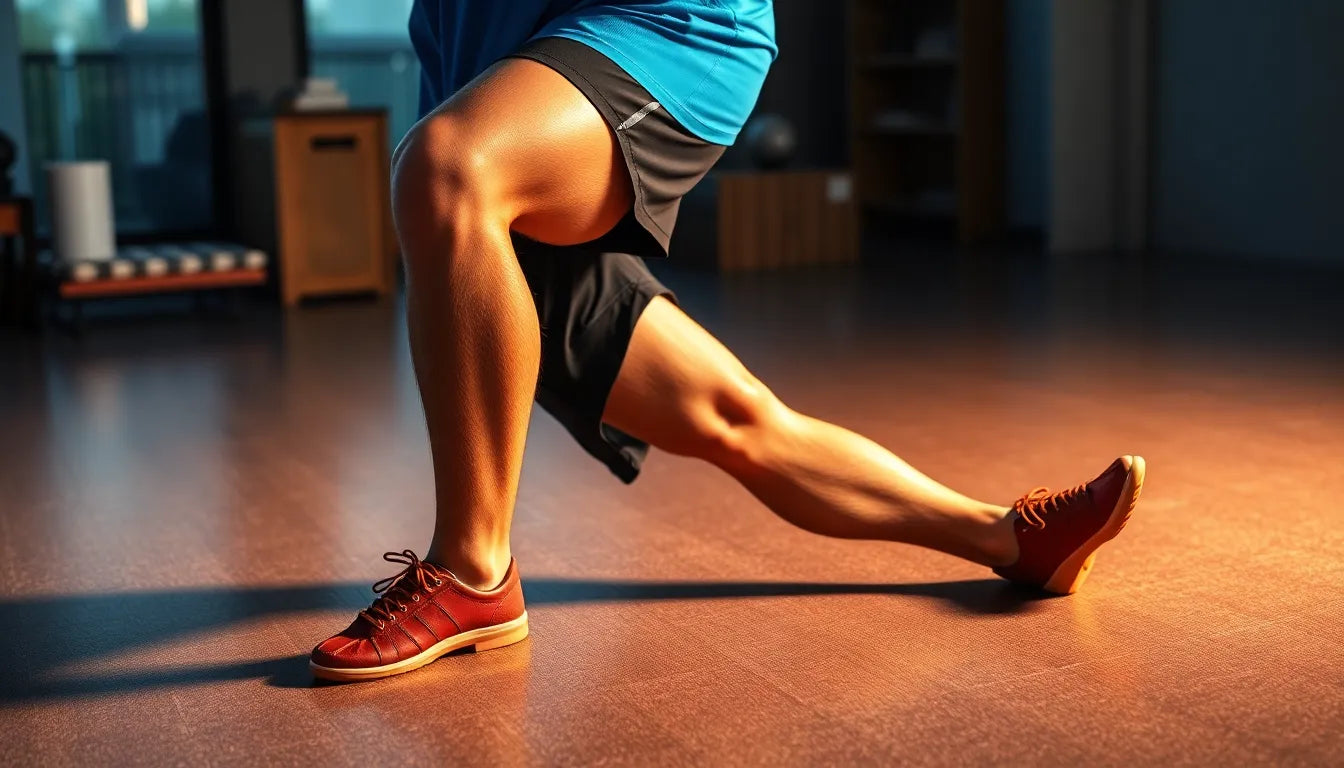Stretching exercises, known as "strækøvelser" and "udstrækningsøvelser" in Danish, have become an essential part of many people's daily routines. These exercises are not just for athletes or fitness enthusiasts; they hold significant benefits for anyone looking to enhance their flexibility and overall well-being. As more individuals become aware of the importance of maintaining a healthy body, the interest in stretching has grown exponentially. This increase in popularity is largely due to the recognition that stretching can improve physical health, prevent injuries, and boost athletic performance.
why stretching exercises are important
Stretching exercises are designed to elongate muscles and tendons, which can lead to improved flexibility and a greater range of motion in the joints. This, in turn, can help correct posture and alleviate tension in the body. By incorporating stretching into your routine, you are not only enhancing your physical capabilities but also promoting better posture and alignment. This proactive approach to body care can significantly reduce the risk of injuries, especially for those who engage in regular physical activities or have sedentary lifestyles.

Lumbar support belt
Supports and stabilizes your lower back to relieve pain and tension during daily activities.
There are various types of stretching exercises, each with its own specific benefits and applications. Understanding these differences is crucial for optimizing your stretching routine, which we will explore further in the subsequent sections. For now, it's important to note that stretching is not a one-size-fits-all approach. Each type of stretch serves a unique purpose and can be tailored to meet individual needs and goals.
the benefits of incorporating stretching
Incorporating stretching exercises into your daily routine can offer numerous benefits. Firstly, they enhance flexibility, which is crucial for maintaining a healthy range of motion in the joints. This is especially important as we age, as flexibility tends to decrease over time. By regularly stretching, you can help counteract this natural decline, keeping your body more agile and less prone to injuries.
Moreover, stretching exercises can improve blood circulation throughout the body. This increased blood flow not only aids in muscle recovery but also contributes to overall cardiovascular health. Additionally, by promoting relaxation and reducing muscle tension, stretching can help alleviate stress and improve mental well-being.
Finally, it's worth mentioning that stretching can enhance athletic performance. By preparing the muscles and joints for physical activity, stretching can improve overall performance and reduce the likelihood of injuries. Whether you're a seasoned athlete or someone who enjoys occasional physical activity, incorporating stretching into your routine can be a game-changer.
With these benefits in mind, it's clear that stretching exercises are a valuable addition to any fitness regimen. In the next section, we'll delve deeper into the different types of stretching and how to effectively incorporate them into your routine.
exploring different types of stretching exercises
Understanding the various types of stretching exercises, or strækøvelser and udstrækningsøvelser, is essential for tailoring a routine that suits your specific needs. Each type serves a distinct purpose, and incorporating a mix can optimize your flexibility and overall performance.
static stretching: maintaining muscle length
Static stretching is the most common form of stretching, often performed after workouts. It involves holding a stretch for a period, usually between 15 to 60 seconds, allowing muscles to elongate and relax. This type of stretching is crucial for maintaining muscle length and preventing stiffness post-exercise. By incorporating static stretches into your routine, you can improve flexibility and promote recovery, reducing the risk of injury.
dynamic stretching: warming up the body
Dynamic stretching is ideal for warming up before engaging in physical activities. Unlike static stretching, dynamic stretching involves active movements that mimic the exercise or sport you are about to perform. This method increases blood flow, enhances muscle activation, and improves joint mobility. By integrating dynamic stretches, such as leg swings or arm circles, into your warm-up routine, you prepare your body for optimal performance.
advanced techniques: pnf and ballistic stretching
For those looking to delve deeper into advanced stretching techniques, Proprioceptive Neuromuscular Facilitation (PNF) and ballistic stretching offer unique benefits. PNF combines passive stretching with isometric contractions to achieve greater flexibility. This technique is often used in rehabilitation settings and requires a partner or professional guidance.
Ballistic stretching, on the other hand, involves bouncing movements to push muscles beyond their typical range. While it can be effective for certain athletic training, it carries a higher risk of injury if not performed correctly. Therefore, it is less commonly recommended for the general public.
comprehensive benefits of stretching exercises
Incorporating a variety of stretching exercises into your routine can yield numerous benefits. Stretching enhances flexibility, allowing for greater mobility and improved joint function. This is particularly beneficial for athletes, as increased flexibility can enhance performance and reduce the risk of injury.
Moreover, stretching plays a crucial role in injury prevention. By elongating muscles and improving joint range of motion, stretching helps prevent muscle strains and other common injuries. It also reduces muscle soreness and enhances recovery post-exercise, allowing you to maintain an active lifestyle with fewer setbacks.
Additionally, stretching promotes increased blood flow to the muscles, which aids in nutrient delivery and waste removal. This not only supports muscle recovery but also contributes to overall cardiovascular health. Furthermore, regular stretching can improve posture by lengthening tight muscles and promoting better alignment.
practical stretching exercises to incorporate
To effectively incorporate stretching into your routine, consider these practical exercises:
- Leg Swings (Dynamic): Stand next to a wall for support. Swing one leg forward and backward in a controlled manner, gradually increasing the range of motion. Repeat for 10-15 swings per leg.
- Lunges with Rotation: Step forward into a lunge position. Rotate your torso towards your leading leg, hold for a moment, then return to standing. Repeat on the other side, 10 times per leg.
- Classic Hamstring Stretch (Static): Sit on the floor with one leg extended and the other bent. Reach towards the toes of the extended leg, keeping your back straight. Hold for 20-30 seconds, then switch legs.
- Quadriceps Stretch (Standing): Stand on one leg, grab the ankle of the opposite leg, and pull it towards your buttocks. Keep your knees close together and hold for 20-30 seconds. Switch legs.
By incorporating these exercises into your routine, you can experience the full range of benefits that stretching has to offer. Whether you're aiming to enhance athletic performance, prevent injuries, or simply improve your overall well-being, stretching exercises are a valuable addition to any fitness regimen. Stay tuned as we continue to explore more exercises and answer common questions about stretching in the next section.
continuing with effective stretching exercises
Building upon the exercises previously discussed, let's explore two additional stretching exercises that can further enhance flexibility and overall body wellness.
- Downward Dog (Yoga): Begin on all fours with your hands shoulder-width apart and knees hip-width apart. Lift your hips towards the ceiling, straightening your legs to form an inverted V-shape. Keep your hands and feet grounded, and focus on elongating your spine. Hold this position for 30 seconds, allowing your body to relax into the stretch.
- Back Stretch (Lying Knees to Chest): Lie flat on your back and gently bring your knees towards your chest, wrapping your arms around them. Hold this position for 20-30 seconds, focusing on releasing tension in your lower back. This stretch is excellent for relieving stress and promoting relaxation.
recommendations for stretching routine
To maximize the benefits of stretching exercises, it is recommended to hold each stretch for approximately 30 seconds. This duration allows muscles to fully relax and elongate, promoting greater flexibility and reducing the risk of injury. Proper technique is crucial; ensure that movements are controlled and avoid bouncing or jerking motions. Incorporating stretching into daily routines can be beneficial for various groups, including athletes, seniors, and office workers, helping to improve flexibility and overall well-being.

Women's Posture Shirt™ - Black
Patented posture shirt activates muscles and helps relieve pain and tension.
frequently asked questions
what is the best time to stretch?
Stretching can be beneficial both before and after workouts. Dynamic stretching is ideal before exercise to warm up the body and prepare muscles for activity. Static stretching is best performed after workouts to help maintain muscle length and prevent stiffness. Additionally, incorporating stretching into daily routines can enhance flexibility and overall health.
can stretching help with back pain?
Yes, specific stretches can alleviate tension and improve mobility, potentially reducing back pain. Exercises like the lying knees to chest stretch can help release lower back tension, while other targeted stretches can improve posture and alignment, contributing to back pain relief.
how often should i stretch?
For general flexibility maintenance, it is recommended to stretch a minimum of 3-4 times per week. However, for those with specific goals or issues, daily stretching can provide greater benefits and help address specific areas of concern.
is it normal to feel pain while stretching?
It is normal to feel mild discomfort while stretching, but you should not experience pain. Pain indicates that you may be pushing too hard or stretching incorrectly. Always listen to your body and stop if you feel pain.
can stretching improve posture?
Regular stretching can significantly enhance posture by lengthening tight muscles and improving body alignment. This can lead to better posture over time, reducing strain on the body and promoting overall well-being.


















